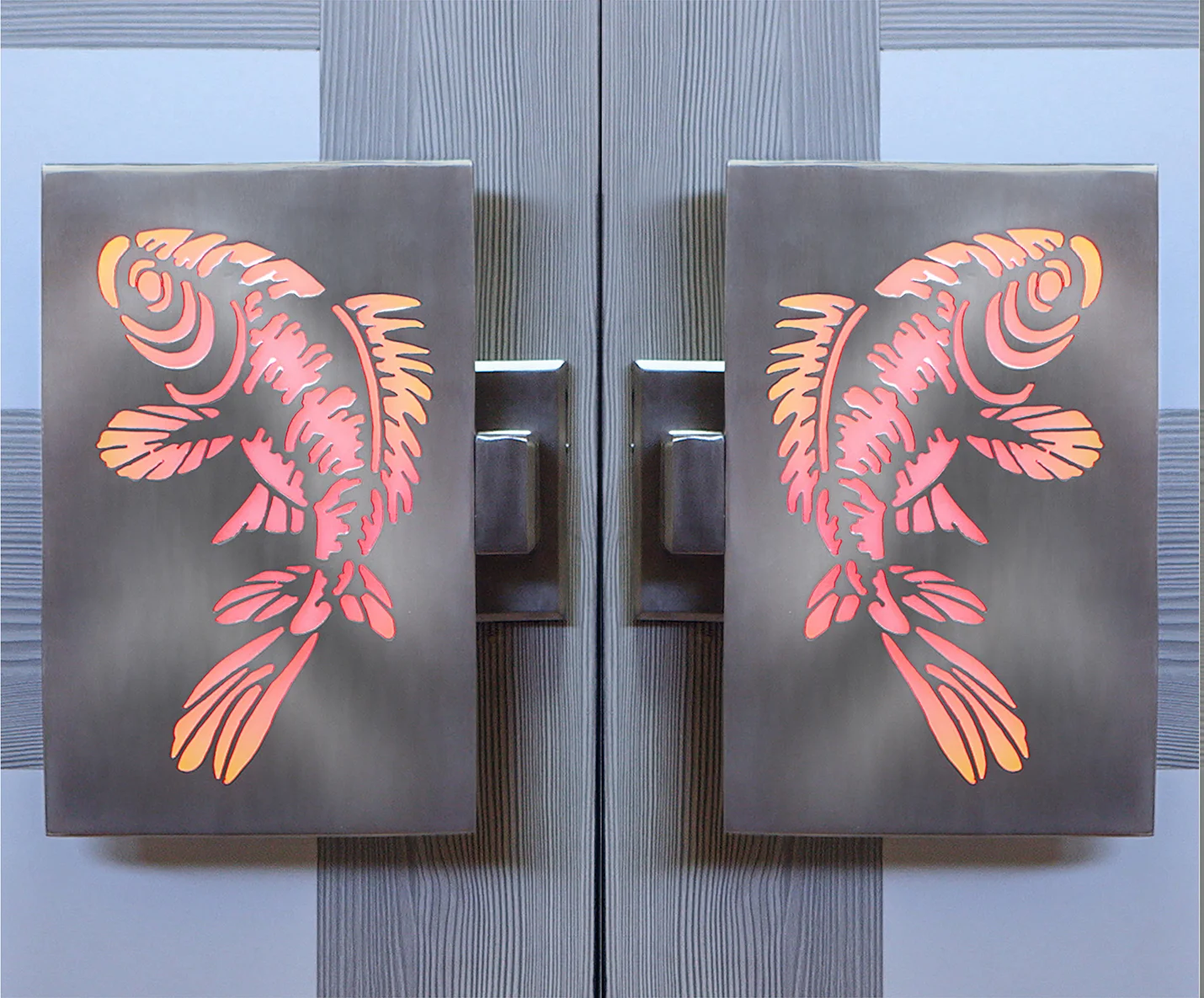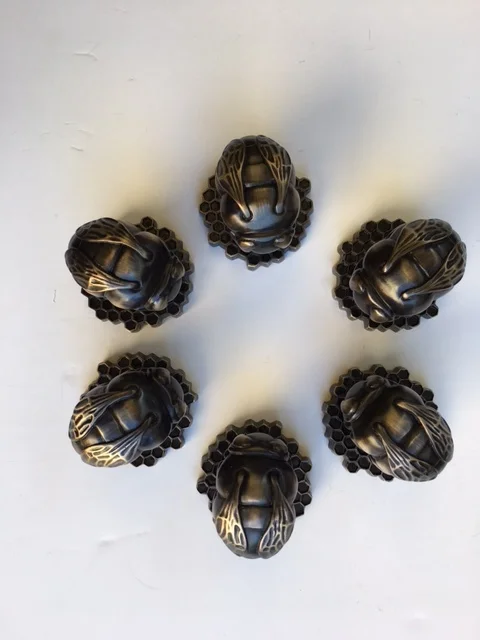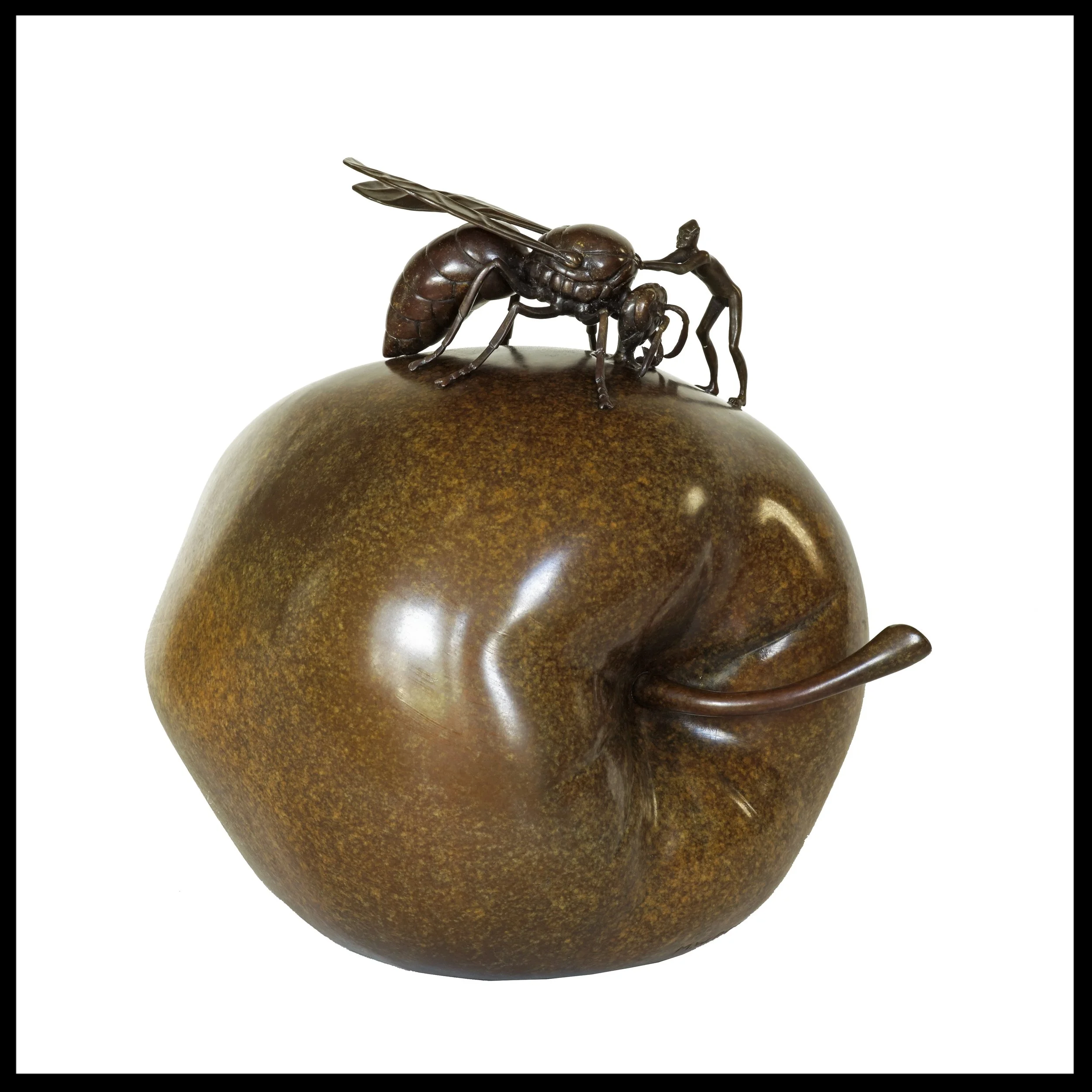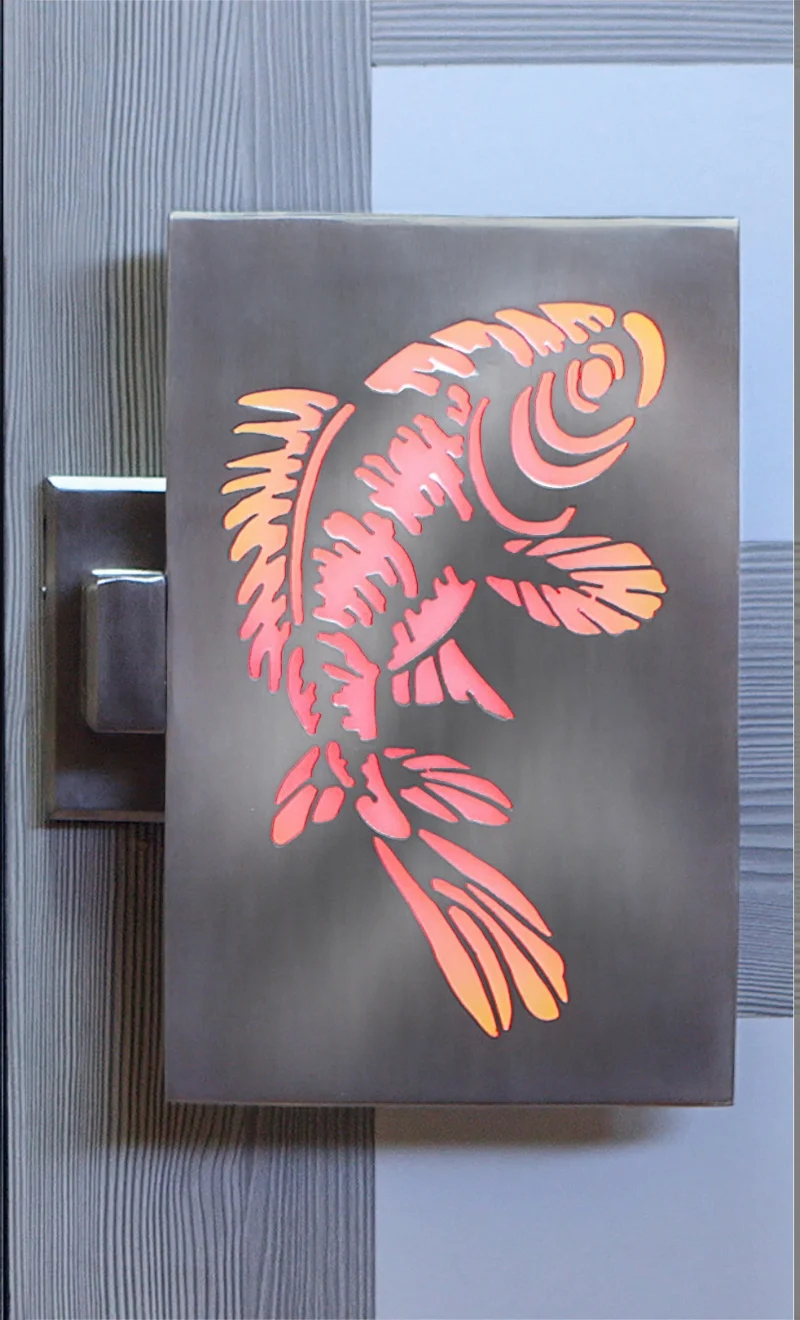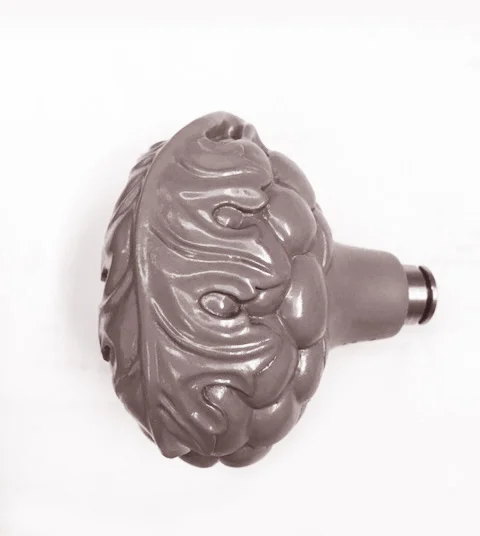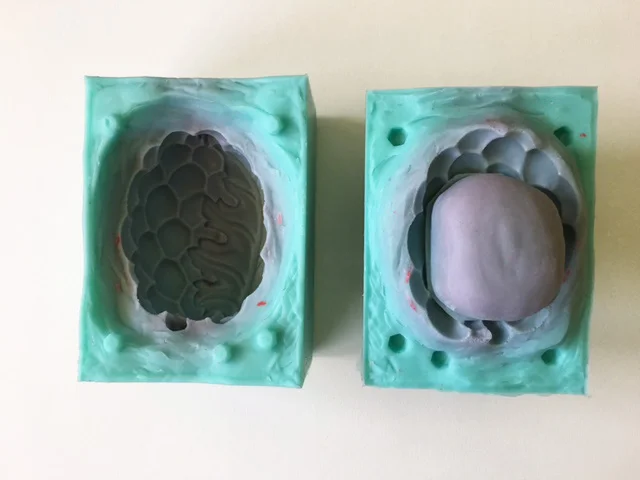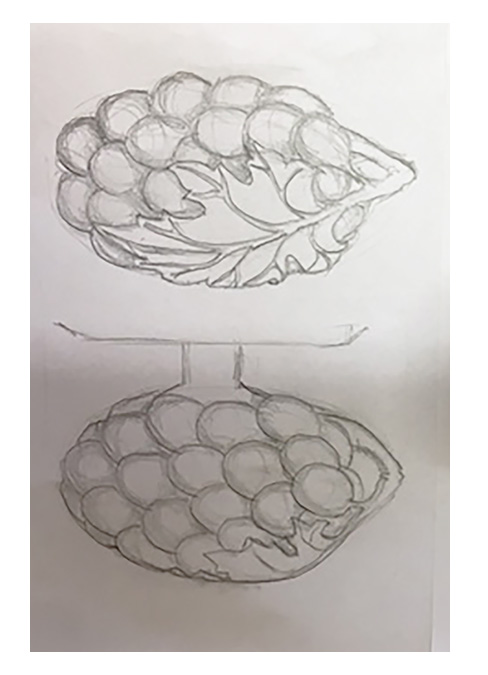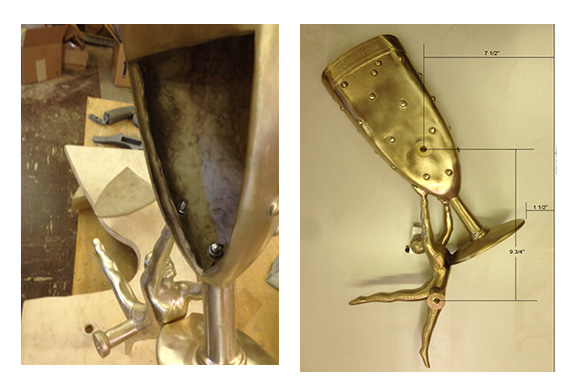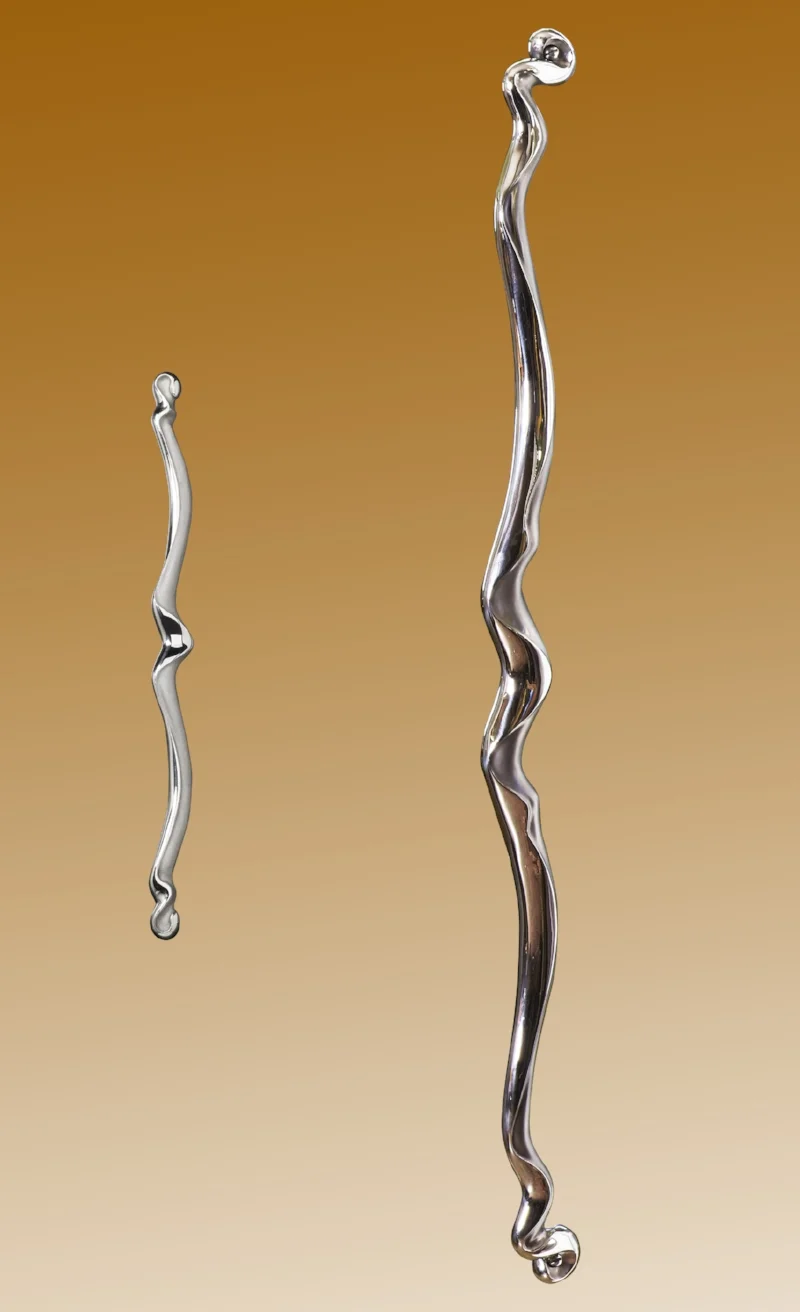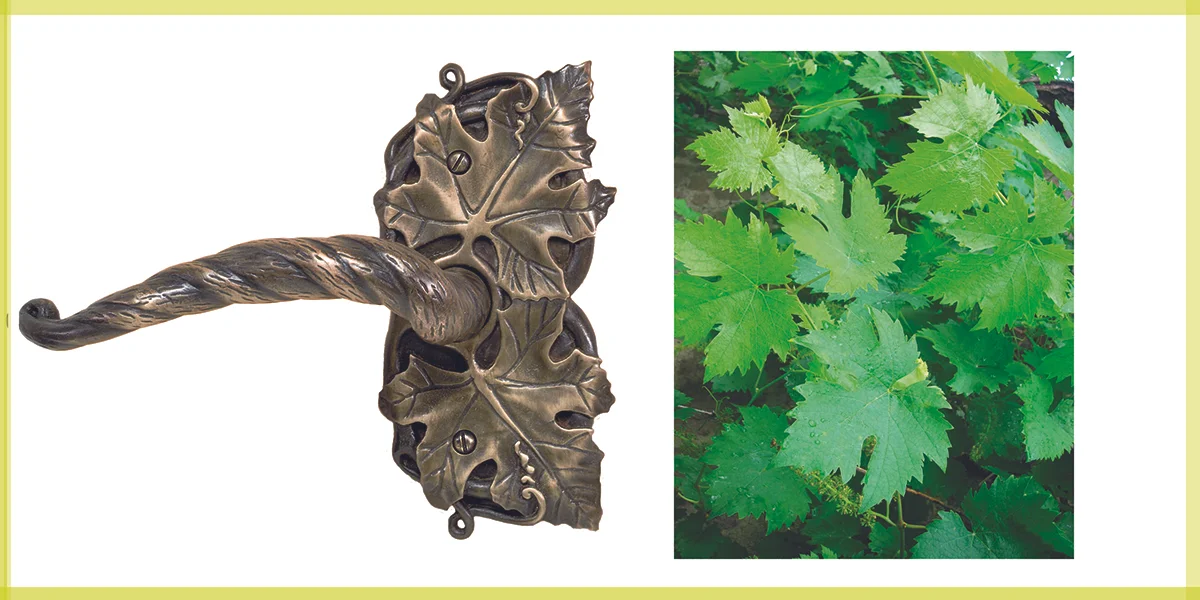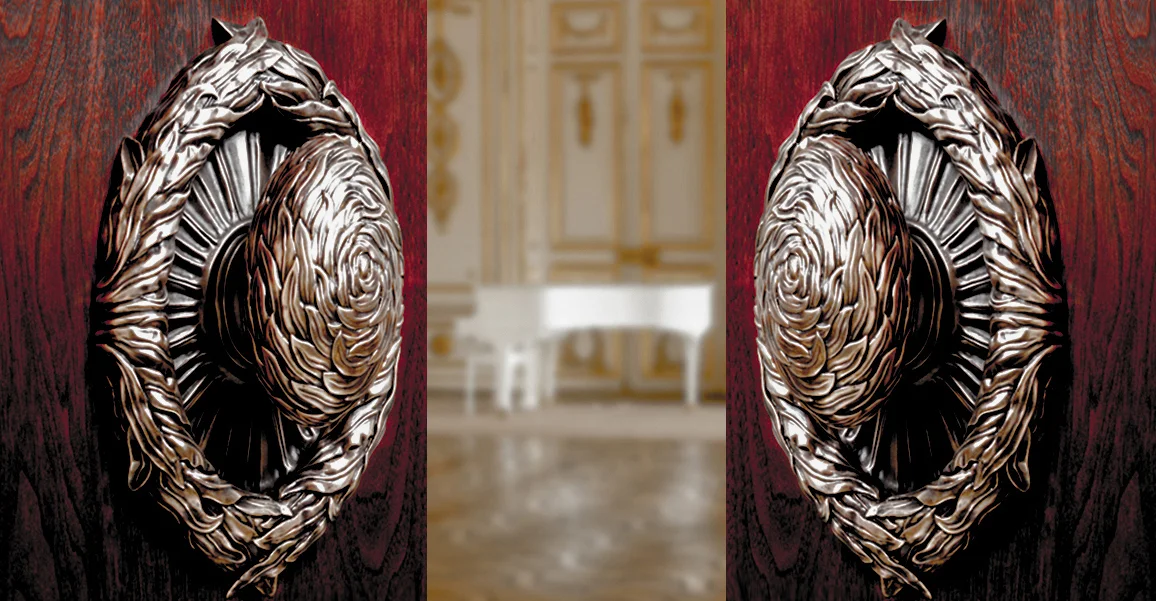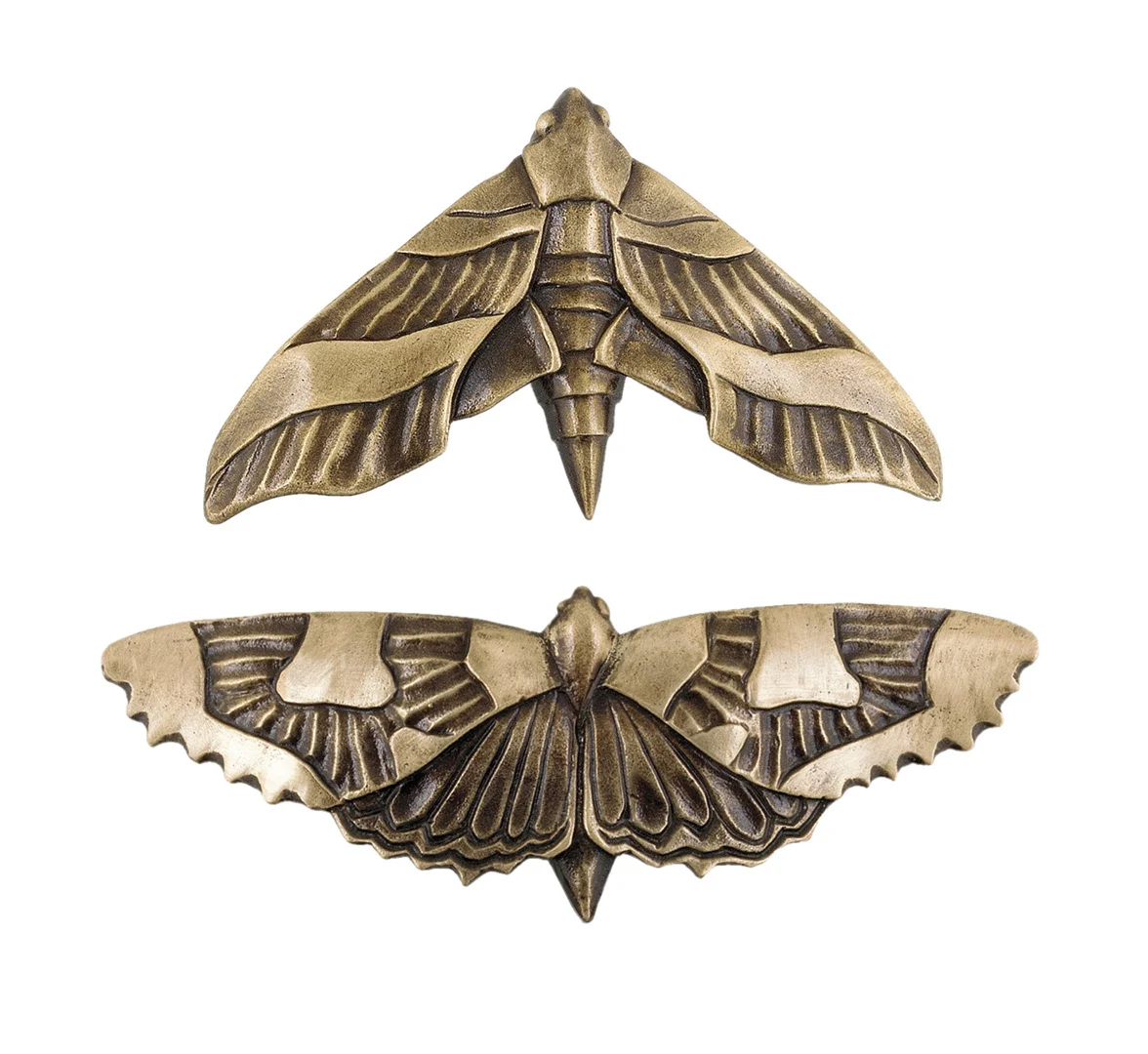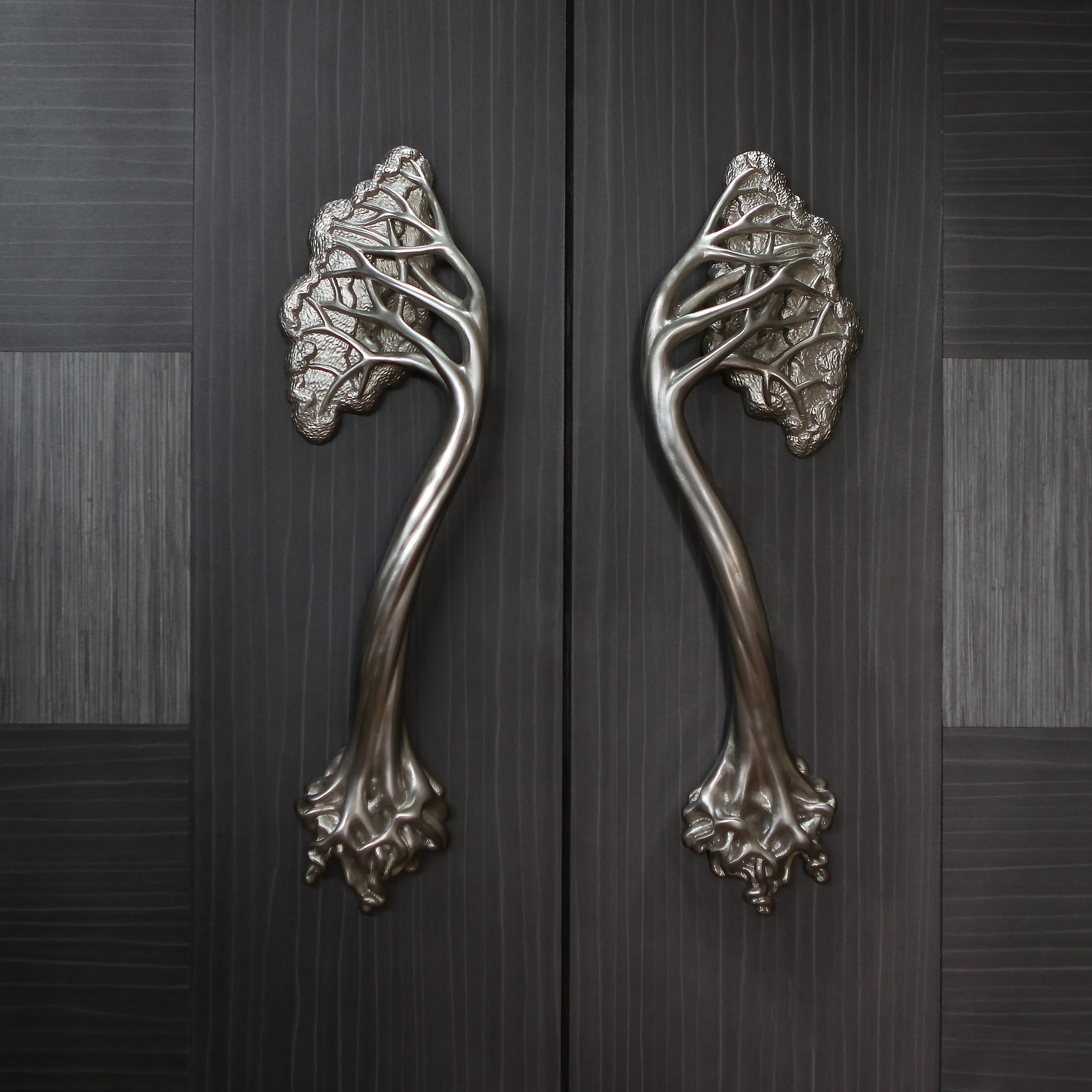Our grapevine door handle collection has, until now, focused on capturing the gnarly quality of vine stems and the distinctive serrated shape of their leaves, with less attention on the grapes themselves. This focus worked well for creating long door grips and horizontal door levers but was not well suited for a door knob.
With this in mind, we began work on a new vine door knob and in our July 12th post shared with you how Martin Pierce created detailed perspective drawings as guidelines for his 3 dimensional wood pattern. The pattern was carved in basswood, sealed with primer and used to create a 2 piece hollow core mold. Red wax was poured into the mold and several wax replicas were made. The wax facsimiles were then coated with successive layers of fine ceramic slurry to form an outer wall and the pieces were baked to form a rigid ceramic shell. Once baked, the ceramic shells were heated in a de-waxing autoclave and steam was pumped into the shell to remove the wax. The wax was then filtered, cleaned and recycled for future use. The de-waxed shell was subsequently invested with molten bronze and after cooling, the gates that delivered the fluid metal were ground away and the bronze casting was ready to “chased” or refined by hand.
Seven weeks later and we have now machined our first castings, added the spindle and internal springs, fitted our existing vine leaf back-plate and finished by hand our first pieces. We hope you like this new addition to the collection.




